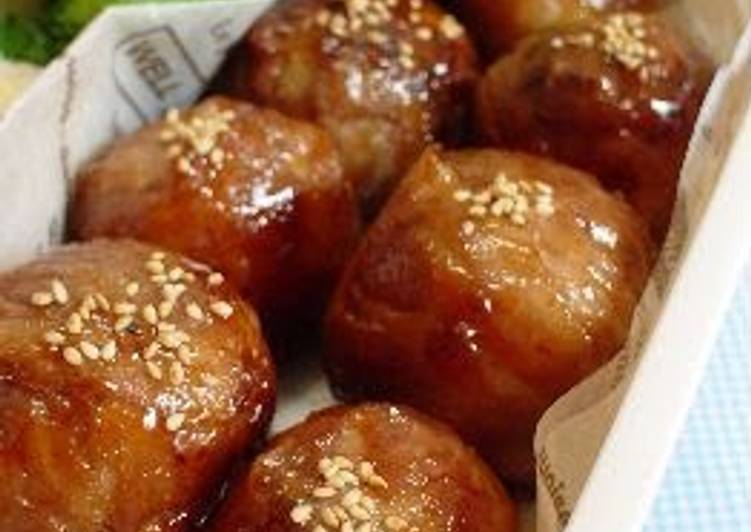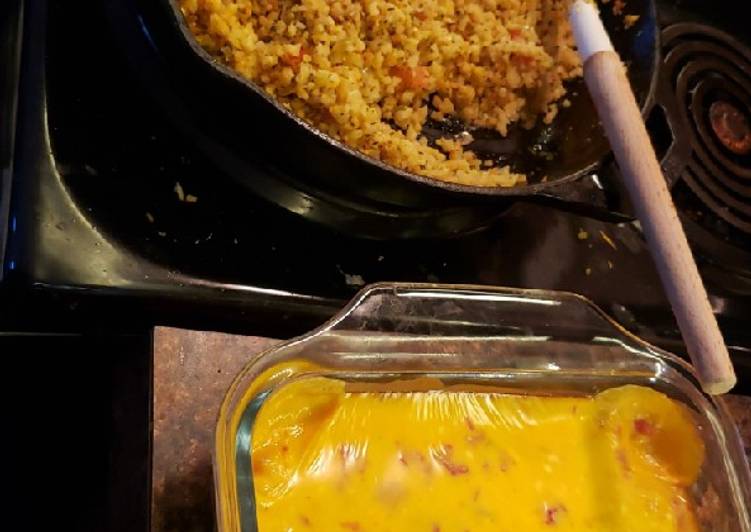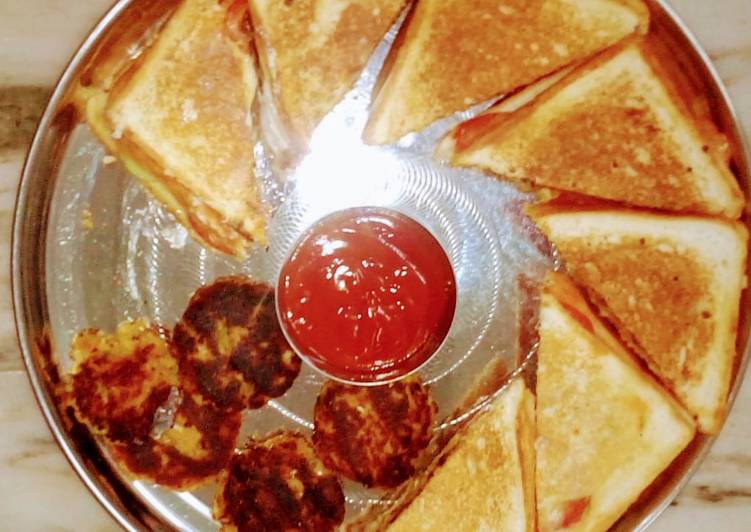
Hello everybody, it’s Brad, welcome to our recipe site. Today, I will show you a way to make a distinctive dish, meat wrapped onigiri rice balls using shabu-shabu pork slices. One of my favorites. This time, I will make it a bit tasty. This is gonna smell and look delicious.
Meat Wrapped Onigiri Rice Balls using Shabu-Shabu Pork Slices I wanted to make hearty and filling onigiri that would be satisfying even when there aren't a lot of side dishes in the bento box. If you roll the meat wrapped rice balls around while the meat is uncooked it will fall off, so cook it one section at a time. Nikumaki onigiri (Meat wrapped rice balls) are generally made with pork.
Meat Wrapped Onigiri Rice Balls using Shabu-Shabu Pork Slices is one of the most well liked of current trending meals in the world. It’s enjoyed by millions every day. It is easy, it’s fast, it tastes yummy. Meat Wrapped Onigiri Rice Balls using Shabu-Shabu Pork Slices is something which I have loved my entire life. They’re fine and they look wonderful.
To begin with this recipe, we have to first prepare a few ingredients. You can cook meat wrapped onigiri rice balls using shabu-shabu pork slices using 8 ingredients and 9 steps. Here is how you can achieve it.
The ingredients needed to make Meat Wrapped Onigiri Rice Balls using Shabu-Shabu Pork Slices:
- Get 1 rice bowl full Plain cooked rice
- Get 4 slice Very thinly sliced pork (for shabu-shabu)
- Make ready 2 pieces Bite sized pieces of processed cheese
- Make ready 1 tsp Soy sauce
- Get 2 tsp Mirin
- Get 1 tbsp Flour
- Take 1 Salt and pepper
- Prepare 1 dash Oil
Great recipe for Japanese Nikumaki Onigiri(Meat wrapped rice balls). "Niku" means meat and "maki" means wrapped. It was originally a meal cooked for employee at one small Japanese drinking restaurant in rural area, but it has spread all over Japan because it is so taste. Japanese Nikumaki Onigiri(Meat wrapped rice balls). Make small rice balls by using plastic wrap or hands.
Instructions to make Meat Wrapped Onigiri Rice Balls using Shabu-Shabu Pork Slices:
- Make 2 onigiri (rice balls) with a piece of processed cheese in the center. Use a fairly small amount of rice!
- Wrap the pork slices around each rice ball, about 2 slices per ball; the first slice in one direction, then the second slice perpendicular to it. The meat should cover the rice completely.
- Squeeze the meat covered rice balls with your hands to shape and season with salt and pepper. Put a little flour in a plastic bag, put in the balls and shake to coat with flour.
- Heat oil in a frying pan, and pan fry the onigiri one side at a time. Don't roll around. Turn from side to side to brown all over.
- When the meat is cooked, add mirin and soy sauce to the pan and coat the meat well.
- You can change the size and make bear shaped onigiri and other characters!
- I made Jackie from "The Bear School" (a popular children's book series). I used a quartered piece of cheese for the ears.
- This was featured on Charaben Stadium, a TV show about character bentos.
- I was able to make 16 meat wrapped onigiri with 350 yen worth of thinly sliced shabu shabu pork (pork shoulder). I used 2 rice cooker cups worth of rice. So much better to make these at home!
Wrap the rice balls in sliced meat. Place a little bit of oil in a frying pan. Start frying from sealed side down until they becomes crispy brown. If the bottoms are cooked, turn them over. Using Japanese short-grain rice is the key to tender onigiri even after the rice balls have cooled to room temperature.
So that is going to wrap it up for this exceptional food meat wrapped onigiri rice balls using shabu-shabu pork slices recipe. Thanks so much for your time. I am confident that you will make this at home. There is gonna be interesting food at home recipes coming up. Remember to bookmark this page in your browser, and share it to your loved ones, friends and colleague. Thanks again for reading. Go on get cooking!


